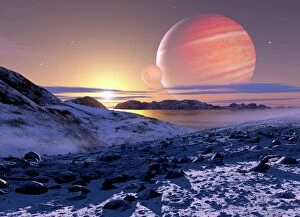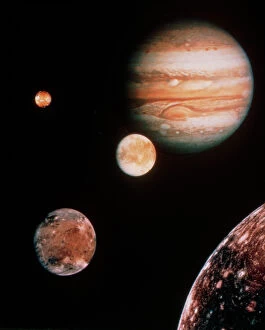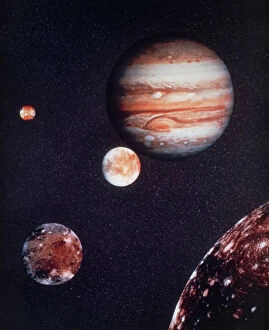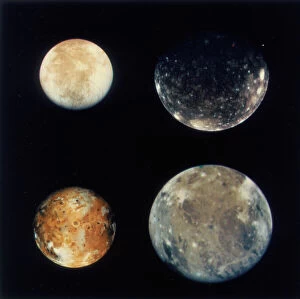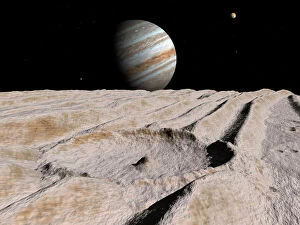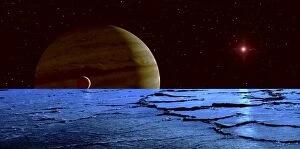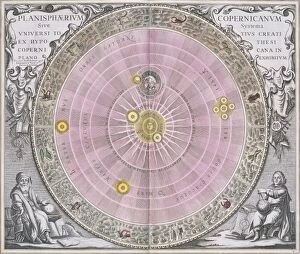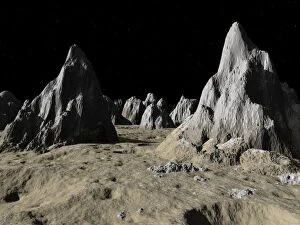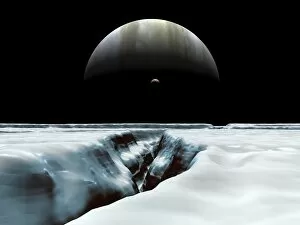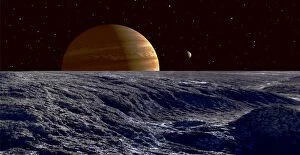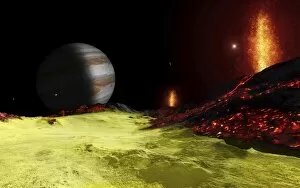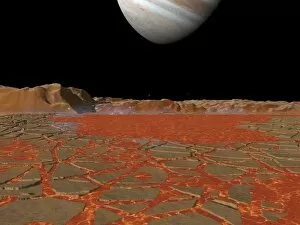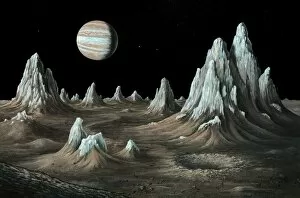Galilean Moons Collection
"Exploring the Mysteries of Jupiter's Galilean Moons
For sale as Licensed Images
Choose your image, Select your licence and Download the media
"Exploring the Mysteries of Jupiter's Galilean Moons: A Journey Through Time and Space" Step into the realm of celestial wonders as we embark on a captivating journey to unravel the secrets held by Jupiter's mesmerizing Galilean moons. From Europa, our vantage point reveals an awe-inspiring sight – a majestic artwork painted across the vast expanse of space. The Voyager mosaic, captured in R370 / 0003, showcases Jupiter and its four loyal companions in all their glory. Io, Europa, Ganymede, and Callisto stand proudly beside their colossal parent planet, forming a composite image that leaves us breathless with wonder. Transporting ourselves back to 1979, we witness Galileo Galilei himself gazing at these enigmatic moons through his telescope. His discovery forever changed our understanding of the universe and paved the way for countless future explorations. As we venture further into this cosmic odyssey, an artist's concept unveils an impact crater on Ganymede – a testament to the violent forces shaping these distant worlds. The juxtaposition of Ganymede against its mighty host planet reminds us of both beauty and destruction coexisting within this celestial ballet. Intriguingly depicted in a Copernican planisphere from 1708 is another perspective – Themisto offering us a breathtaking view towards Jupiter and its entourage. This artistic portrayal invites us to ponder upon the vastness of space while marveling at nature's grandeur. Our expedition takes an even more thrilling turn as we explore Asgard impact basin on one of Jupiter's moons; its surface bearing witness to ancient cataclysms that shaped this extraterrestrial landscape. We are reminded once again that time itself has left indelible marks upon these remote realms. Finally, casting our gaze from Europa’s frozen surface towards Lo hovering above Jupiter’s horizon fills us with awe-struck admiration for such ethereal beauty.

